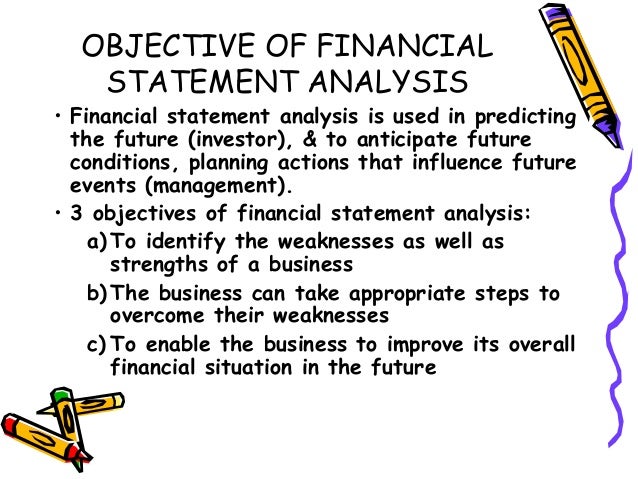Financial Statement Analysis: Definition and 4 Objectives

Financial Statement Analysis: Definition and 4 Objectives
Financial Statement Analysis: Definition and 4 Objectives!
Definition of Financial Statement Analysis :
Financial Statement Analysis is an analysis which highlights important relationships between items in the financial statements. Financial Statement analysis embraces the methods used in assessing and interpreting the results of past performance and current financial position as they relate to particular factors of interest in investment decisions. It is an important means of assessing past performance and in forecasting and planning future performance.
According to Lev:
“Financial Statement Analysis is an information processing system designed to provide data for decision making models, such as the portfolio selection model, bank lending decision models, and corporate financial management models.”
Objectives of Financial Statement Analysis:
The major objectives of financial statement analysis is to provide decision makers information about a business enterprise for use in decision-making. Users of financial statement information are the decision makers concerned with evaluating the economic situation of the firm and predicting its future course.
Financial statement analysis can be used by the different users and decision makers to achieve the following objectives:
1. Assessment of Past Performance and Current Position:
Past performance is often a good indicator of future performance. Therefore, an investor or creditor is interested in the trend of past sales, expenses, net income, cast flow and return on investment. These trends offer a means for judging management’s past performance and are possible indicators of future performance.
Similarly, the analysis of current position indicates where the business stands today. For instance, the current position analysis will show the types of assets owned by a business enterprise and the different liabilities due against the enterprise. It will tell what the cash position is, how much debt the company has in relation to equity and how reasonable the inventories and receivables are.
2. Prediction of Net Income and Growth Prospects:
The financial statement analysis helps in predicting the earning prospects and growth rates in the earnings which are used by investors while comparing investment alternatives and other users interested in judging the earning potential of business enterprises. Investors also consider the risk or uncertainty associated with the expected return
The decision makers are futuristic and are always concerned with the future. Financial statements which contain information on past performances are analysed and interpreted as a basis for forecasting future rates of return and for assessing risk.
3. Prediction of Bankruptcy and Failure:
Financial statement analysis is a significant tool in predicting the bankruptcy and failure probability of business enterprises. After being aware about probable failure, both managers and investors can take preventive measures to avoid/minimise losses. Corporate managements can effect changes in operating policy, reorganise financial structure or even go for voluntary liquidation to shorten the length of time losses.
In accounting and finance area, empirical studies conducted have suggested a set of financial ratios which can give early signal of corporate failure. Such a prediction model based on financial statement analysis is useful to managers, investors and creditors. Managers may use the ratios prediction model to assess the solvency position of their firms and thus can take appropriate corrective actions.
Investors and shareholder can use the model to make the optimum portfolio selection and to bring changes in the investment strategy in accordance with their investment goals. Similarly, creditors can apply the prediction model while evaluating the creditworthiness of business enterprises.
4. Loan Decision by Financial Institutions and Banks:
Financial statement analysis is used by financial institutions, loaning agencies, banks and others to make sound loan or credit decision. In this way, they can make proper allocation of credit among the different borrowers. Financial statement analysis helps in determining credit risk, deciding terms and conditions of loan if sanctioned, interest rate, maturity date etc.

No comments: